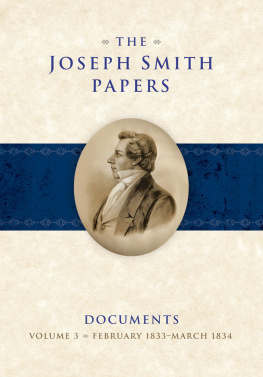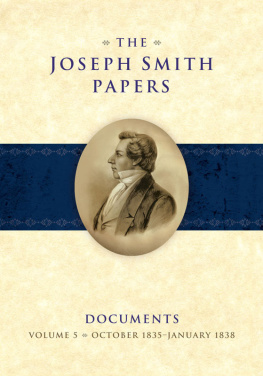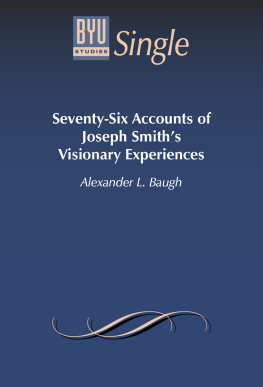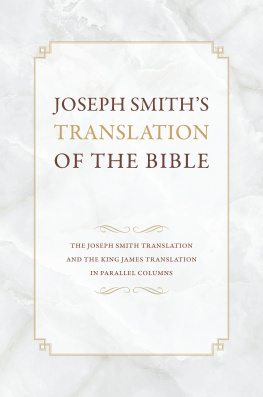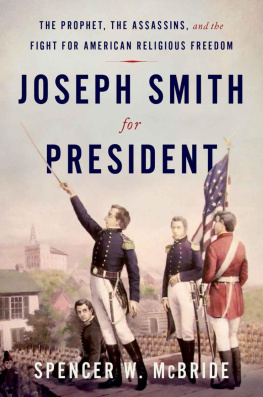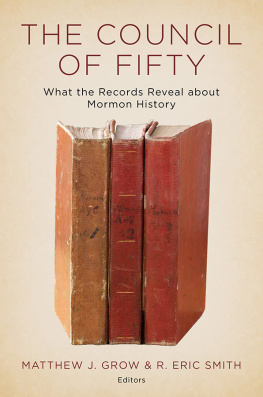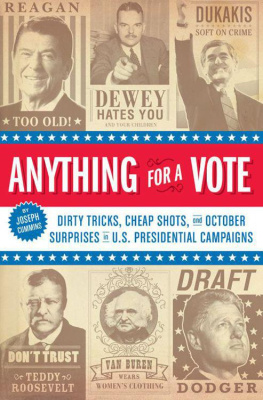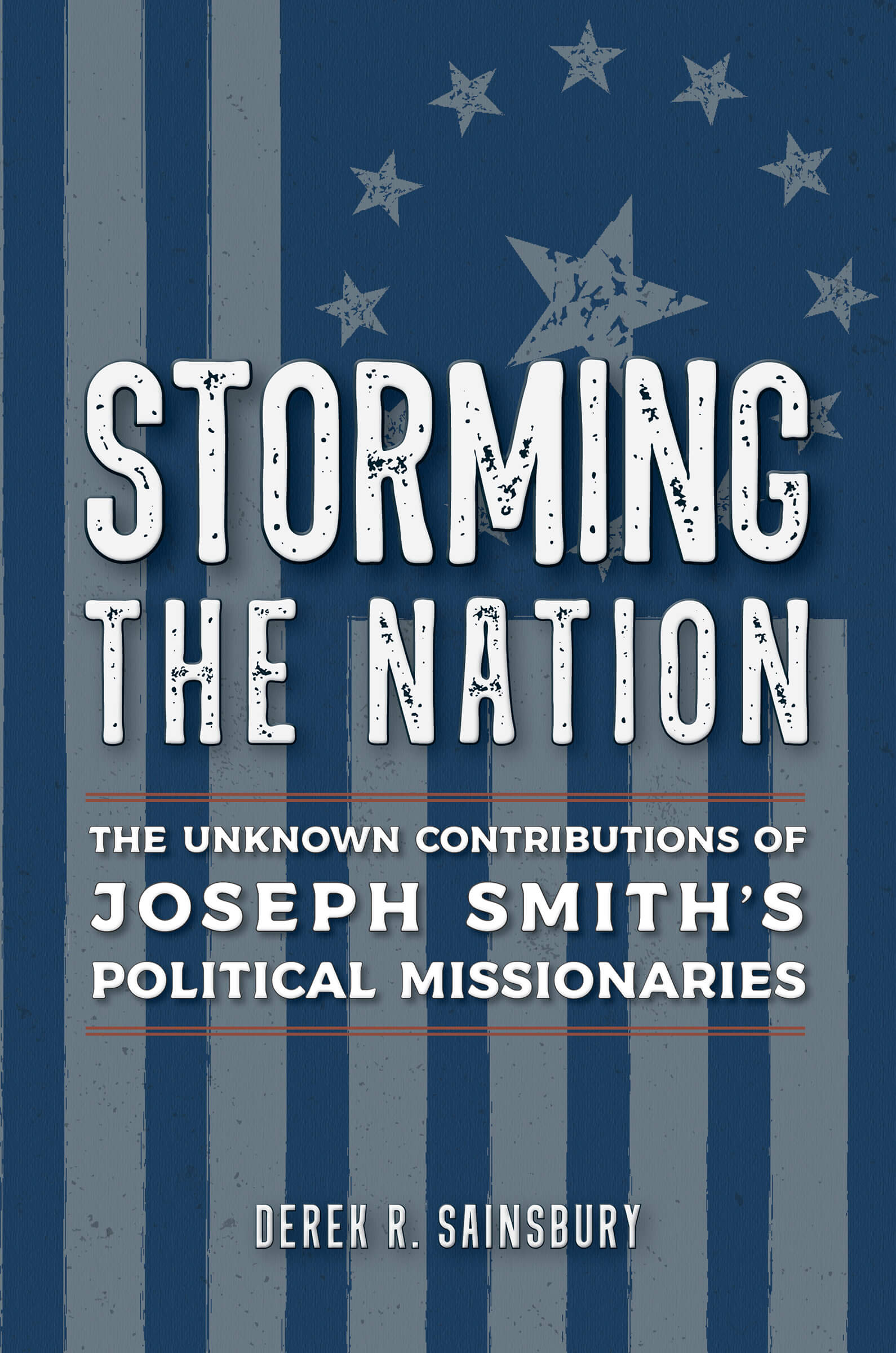Copyright Derek R. Sainsbury 2020
All Rights Reserved
Library of Congress Cataloging-in-Publication Data
Names: Sainsbury, Derek R, 1972- author.
Title: Storming the nation : the unknown contributions of Joseph Smith's
political missionaries / Derek R Sainsbury.
Description: Provo : Religious Studies Center, Brigham Young University [2020] | Includes bibliographical references and index. | Summary: "This volume uncovers the significant but previously unknown contributions of the electioneers who advocated for Joseph Smith's 1844 presidential campaign. The focus is the cadre of more than six hundred political missionaries--who they were before the campaign, their activities and experiences as electioneers, and who they became following the campaign's untimely collapse" Provided by publisher.
Identifiers: LCCN 2019046471 | ISBN 9781944394929 (hardback) | eISBN 978-1-62973-941-0 (eBook)
Subjects: LCSH: Smith, Joseph, Jr., 1805-1844--Political activity. | Church of Jesus Christ of Latter-day Saints--Political activity. | Political campaigns--United States--History--19th century. | Presidents--United States--Election--1844. | Deseret--Politics and government--19th century. | Utah Territory--Politics and government--19th century.
Classification: LCC BX8695.S6 S25 2020 | DDC 324.973/058--dc23
LC record available at https://lccn.loc.gov/2019046471


I began researching this book in 2003. Sixteen years later, it has transformed from a graduate class project to a dissertation to its present form. I never imagined it would take so long. Many obstacles and providential delays have, however, improved the finished product. I have had much help along the journey. My wife, Meredith, is most responsible for seeing this story published. From day one until its completion, she has won eight battles with cancer and endured other serious health concerns. Yet throughout she has been supportive, too often the widow of a Joseph Smith for Presidentobsessed husband. She also assisted in research trips to the Church History Library of The Church of Jesus Christ of Latter-day Saints to help transcribe and count Nauvoo Temple ordinances. Her suggestions during the different stages of this work have been crucial. My sons, Briant, Nathan, and Joshua, encouraged me to continue when I was most discouraged and, during my writing, supplied Diet Coke.
I thank the staffs at the Church History Library, Utah State Historical Society, and special collections departments of Brigham Young University and the University of Utah for assistance. Special thanks go to Meredith Sainsbury, J. B. Haws, Eric Hinderaker, Scott Esplin, Thomas Wayment, Spencer McBride, Johnathan Moyers, Susan Trump, Benjamin Park, Don Brugger, and others who read parts of this manuscript in its various forms. Each gave needed corrections and suggestions that have made the book better. I appreciate the work of personnel at Brigham Young Universitys Religious Studies Center; those not already named include production supervisor Brent Nordgren, graphic designer Emily V. Strong, and student editing interns Julie Newman and Emily Cook. Also, a hearty thank-you to leaders of the Church and the Joseph Smith Papers Project for making available the Council of Fifty minutes that validated and deepened what I had been thinking and writing for years.
I save the biggest nonfamilial thank-you for University of Utah professor Robert Bob Goldberg. I went to the University of Utah to work with Latter-day Saint historian Dean May, who tragically died before my first class. Bob took me under his wing, taught me how to be a good historian and how to navigate and balance a doctoral students life, and served as my dissertation committee chair. His mentorship, friendship, and advocacy of Latter-day Saint studies are valuable to me. In his office one day, I expressed to him my thanks and, correctly, named him the Thomas Kane of Mormon studies. He gave me his trademark smirk and lifted a framed citation, saying, Yes, I even have the award to prove it. Indeed, it was a well-deserved award named after Thomas Kane himself. Bob, an eternal thank-you for making me a better historian and a much better writer, and most importantly for inspiring me to be a better, more thoughtful, and more compassionate person.
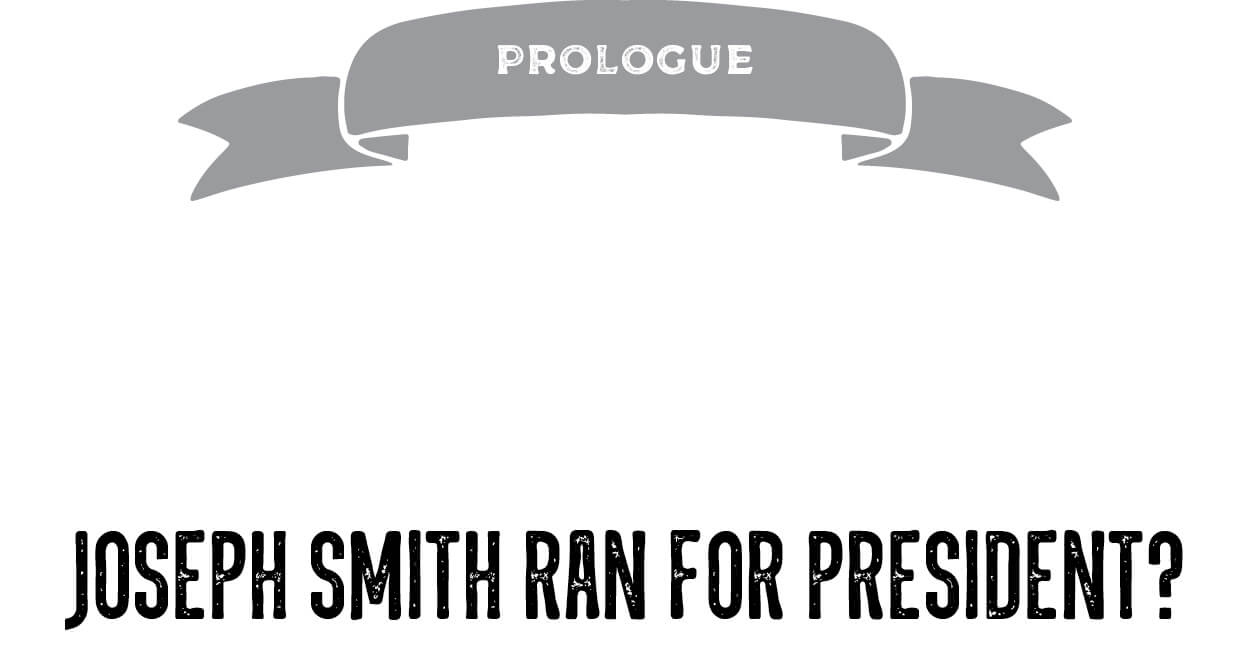
As the Lord God lives Joseph shall be President next term.
Sidney Rigdon
More than six hundred strong and scattered from Maine to Louisiana and from Nauvoo to New York City, they were the largest missionary force Joseph Smith ever dispatched. It would be sixty years before Latter-day Saint missionaries served again in such numbers. These men and one woman were storming the nation as political missionaries advocating the restored gospel and the presidential campaign of the prophet. Facing stiff resistance but also finding surprising success, these electioneers offered their fellow Americans religious and political salvation. But when enemies assassinated Joseph, their campaign collapsed.
Most Americans do not know that Joseph Smith ran for president of the United States. Almost none appreciate that he was the first presidential candidate to be assassinated. Even among members of The Church of Jesus Christ of Latter-day Saints, only a small percentage realize that Joseph campaigned for the White House. Fewer still know that hundreds of electioneer missionaries canvassed the nation for him or make the connection between his campaign and assassination. Only very few of the hundreds of thousands of these electioneers living descendants know their ancestors were political missionaries.
Many would agree that 27 June 1844 was the pivotal day for nineteenth-century Latter-day Saint history. On that day assassins murdered Joseph Smith, president and prophet of the church, and his older brother Hyrum, patriarch of the church. Their deaths at Carthage Jail in western Illinois shocked and splintered the Latter-day Saint community. A plurality would eventually follow Brigham Young, but his ascendancy to the highest rung of church leadership was not the only significant consequence of that fateful day. Equally important in steadying and strengthening the struggling church would be the more than six hundred electioneer missionaries who, at the time of the assassination, had been campaigning for Joseph Smiths presidential run. Their difficult missions at tremendous personal sacrifice had strengthened their commitment to Joseph and his restoration of the Zion ideal of a righteous theocratic societyan ideal at odds with pluralistic, individualistic, and democratic nineteenth-century America. This cadre of devoted electioneers would later help Brigham relocate the Saints and create that Zion community in the Great Basin. In this way the ramifications of Josephs political campaign, together with his assassination, are more telling in shaping the destiny of the church than has been appreciated. Too few know that Josephs robust campaign, and the doughty missionaries assigned to it, stamped their identity on the church in the West. Ironically, the sizable influence of the campaign, assassination, and cadre of electioneers on the progress of the church was commonplace knowledge from 1844 through the early twentieth century.


